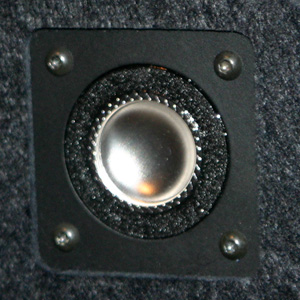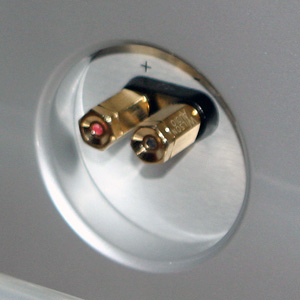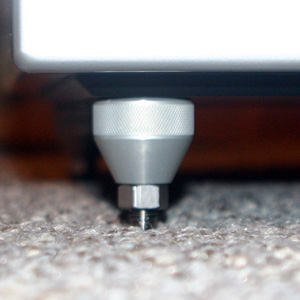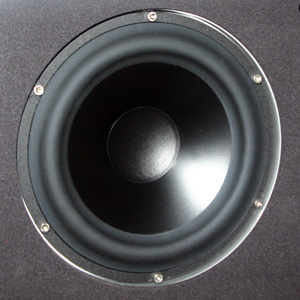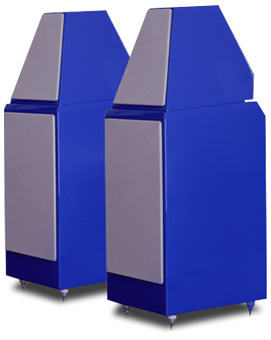 |
|||||||||
| March 1, 2007
Can a $28,000 set of high-end loudspeakers ever be considered a "reasonable" purchase? Consider the current state of high-end audio: The crème de la crème of loudspeakers are priced northward of $100,000. In the past two months I’ve discussed my experience at the 2007 Consumer Electronics Show, in both my "Daily Diary" in SoundStage! Network’s show coverage, and in my February Ultra Audio editorial. Whether I was examining their build quality or their sound, never before had I seen so many high-priced speakers that did not warrant their inflated price tags. In my opinion, some of these products should still have been in the design lab, in the "works-in-progress" area. You don’t always get what you pay for out there in the free market, and the high-end audio sector might be worse than most. So now Wilson Audio Specialties has released the WATT/Puppy 8, priced at $27,900 USD per pair -- a $4000 increase over the WATT/Puppy 7. In the more than 20 years the W/P has been an audiophile favorite, it has been refined, refreshed, and redefined many times. And despite all the "breakthroughs" in speaker design that you’ll hear about as you walk around CES or read about in the magazines, this classic loudspeaker still sounds better than almost any new kid on the block that I’ve heard, many of which cost much more than this venerable Wilson design. In high-end audio in the winter of 2007, the WATT/Puppy 8, compared to much of its competition, is actually a pretty good deal. The new 8 A book could be written about WATT/Puppy lore, but its past few generations have seen the speaker come into its prime. What’s most relevant to this review is how the 8 differs from the 7, which was a success in terms of units sold, positive reviews, and almost any other measure. First and foremost, the 8 includes a new version of the modified inverted-titanium-dome Focal tweeter that has been a staple of Wilson speakers for many years. The new tweeter comes directly from Wilson’s larger, more expensive MAXX Series 2 loudspeaker ($47,900), itself a reference-class product. According to Wilson, this tweeter improves on the older version by reducing "audible grain and noise." The crossover, too, has been revised, to produce what Wilson claims is more resolution as well as more "beauty" -- seemingly opposing goals that less adept speaker designers find themselves having to choose between. Also new is the felt diffraction pad that directly surrounds the tweeter. The WATT cabinet has also been revised. New European Union regulations have banned the lead plates formerly used to damp resonances. Wilson therefore had to revise the WATT’s internal architecture by designing a new bracing scheme using the company’s very expensive X material. Although the WATT 8 feels a bit lighter than the 6 I used to own, a rap with the knuckles still reveals a cabinet that’s quite dead -- another longstanding hallmark of Wilson products. Those of you who’ve read about Wilson speakers in the past will know that the company builds their speaker cabinets of two proprietary materials, M and X. The speakers now look better, too. The speaker faces’ diffraction pads are now recessed flush with the surface of the cabinets, and the grilles now attach via metal pins and detents. The look is sleeker and more refined -- the W/P profile now looks finished. Wilson owners can attest to the strength of Velcro: as used in the old-style WATT/Puppy grilles, the Velcro would pull the diffraction pads away from the cabinet baffle. Thankfully, that’s now a thing of the past. To accommodate the recessed diffraction pads, the exterior dimensions of the W/P8 are slightly larger than before: 41"H x 13"W x 18.75"D. The overall speaker weight is specified at 170 pounds each. All of these changes add up to a new iteration of the venerable WATT/Puppy, and I was awfully interested in hearing what it could do.
Setup I installed the WATT/Puppy 8s in my Music Vault listening room, a space purpose-designed for great sound. The speakers were situated just forward of the spots identified for my Wilson X-2 Alexandrias, the 8s’ rear-firing ports in the same plane as the X-2s’ forward-firing ports. These positions worked beautifully, and were squarely in the Wilson-specified ratios of the speakers’ distances from the listener and from each other. I found that these placements optimized bass extension while not overly exciting my room’s primary axial bass mode in the upper-20Hz region. They also maximized soundstage depth and apparent air around instruments and performers. The WATT/Puppy 8s were paired with two solid-state integrated amplifiers that couldn’t be more different in price and design: the Esoteric AZ-1 digital amplifier (80Wpc into 6 ohms, $4500) and, from Denmark, Vitus Audio’s mammoth SS-101 (50Wpc class A into 8 ohms, $28,000). The source was the Esoteric UX-3SE universal player, and cables and power conditioning were from Shunyata Research. Sound My initial impressions were both positive and, considering some of my past purchases, a bit disconcerting. In most areas of sound reproduction, the WATT/Puppy 8 was much closer to the larger, far more expensive ($135,000/pair) Alexandria X-2 -- a reference-class speaker that I’ve enjoyed in the Vault for some time -- than it had any right to for its size and price. There was no question that the W/P shared the attributes of its big sister, albeit on a smaller scale. The two speakers’ similarities began with their generous power envelopes -- the ability to play loudly, cleanly, and with physical punch. Playing the title track of Donald Fagen’s Morph the Cat [CD, Reprise 49975-2], I could hear no strain as the smaller W/Ps easily managed my room. Even at volume levels a bit louder than I normally listen, the low bass right up to the upper midbass was accurate in pitch with a nice helping of tight-fisted control. The seeming incongruity of small size and big sound also distinguished the WATT/Puppy 8 from other loudspeakers of similar size that I’ve heard in my room: Like the ant you see carrying a crumb fives times its size, the W/P8 had the ability to perform much larger than I would have thought from looking at it. They especially belied their compactness when playing rock classics: The 4 Non Blondes’ "Superman," from their 1992 release Bigger, Better, Faster, More! [CD, Interscope 7 92112-2], poured into my room with waves of electric guitar and howling female vocals. Amazingly, the W/Ps kept this track well sorted; there was no jumble of notes caused by a speaker that couldn’t handle extremes of complexity and frequency -- an attribute much needed when playing back compressed rock’n’roll at high volume. Basically, the W/P8 didn’t make this marginal recording sound any worse than it actually was. Perhaps earlier versions of the WATT/Puppy had this ability to play big to various degrees, but I don’t recall hearing them do so with the ease and fluidity of the W/P8s -- whatever I threw their way just flowed right through these speakers. I don’t mean to imply that the WATT/Puppy 8s sounded like huge studio monitors, but when asked to, they could do just that. They could also play back complex music at lower levels without fine details being lost in the noise floor. Listening to Eleanor McEvoy’s "I’ve Got You to See Me Through," from Yola [CD, Blue Dandelion 2], provided a perfect illustration. The soundstage was wall-to-wall, the bass remained taut and defined, and the vocals lost no presence or texture. It’s natural to focus on this aspect of the 8s’ performance, because it’s an area in which so many audiophile speakers fail -- most are either good at reproducing at low levels only music that’s limited at the frequency extremes, or they come alive only when played at much higher levels. Few do both equally well, but the W/P 8 is one of them. If, like many of the people who write me seeking speaker recommendations, you’re frustrated with wimpy audiophile speakers and you’ve been making excuses for what you have now ("But they’re amazing with small-group jazz!," I often hear), look no further. Considering the sums of money we audiophiles sometimes spend, the thought of having to alter the music you listen to in order to minimize your system’s failings is surely unacceptable. The 8 displayed none of the shortcomings at the frequency extremes that hamper lesser loudspeakers: there was no overhang or bloat in the bass, no tizziness or grain in the highs. Program material allowing, the bass was always agile and defined -- strengths that, to one degree or another, have been hallmarks of Wilson speakers ever since I can remember. The midbass was reproduced with enough energy (i.e., moved enough air to cause a physical sensation) to re-create in my room a good facsimile of a drum kit. The new tweeter sounded silky-smooth from the bottom of its passband to the uppermost limits of audibility. It displayed fine detail effortlessly, and sounded as if it is quite low in distortion. In their recent marketing literature, Wilson Audio has made a big deal of their Focal tweeter. They claim that they compared this driver, refined and modified over many years, with more exotic offerings made from such materials as beryllium and diamond, and ended up preferring their titanium dome. And while some other manufacturers would surely dispute Wilson’s claim of musical superiority, I found it hard to argue with the results. The 8 never sounded bright during my auditioning, nor did any musical detail go missing. Would a tweeter that extends out to 100kHz -- or whatever the latest super-spec is -- give you more musical satisfaction? I listened to a few models at CES for which just that was claimed, and for the life of me could not make an absolute determination of the benefits of that level of hyperextension. Probably even more important than extension, the Wilson tweeter crossed over to the midrange driver seamlessly. The late Jeff Buckley’s "Last Goodbye," from Grace [CD, Columbia 57528], was delivered intact: the emotional vocals that I’ve come to appreciate on this disc were clear and present. If you’ve been a fan of Wilson loudspeakers in the past, you’ll be happy to know that some of their key strengths have been further refined in the W/P8: The pair of them threw a huge, wall-to-wall soundstage, and placed individual performers in that space with uncanny specificity. This characteristic, though not exactly new to the WATT/Puppy series, is something Wilson owners cherish. If you’re one, you’ll be thrilled with the 8 in this regard. The W/P8 also sounded coherent; that is, the outputs of its drive-units meshed seamlessly. I was never reminded that I was listening to a multiway design.
What you don’t get with the WATT/Puppy 8 The WATT/Puppy 8 is not a stand-in for Wilson’s Alexandria X-2 -- no surprise there. The W/P8s had nowhere near the soundstage depth that the X-2s can display. The much larger X-2s also reproduce height information in a much more convincing way -- they’re fantastic with choral works, for instance. And, as you’d imagine from looking at their size and driver complement, the X-2s dig deeper in the bass, and can do so at much higher volumes. The W/P8s could physically move me, but the X-2s can do that while also physically moving the room; with organ music, this is paramount. The WATT/Puppy 8 won’t give you everything that some of its competition will. For instance, it won’t give you inconsistent build quality -- the finish and construction details I admired as I set up my pair of 8s were outstanding. Nor will you get a disconnected phone when you call the Wilson factory; you’ll get a live person who can help if you need a part or a manual. And as someone who has loved the sound of Wilson speakers for the past ten years I’ve owned them, I think I can guarantee that you won’t be disappointed when you fire them up. All of this is to say that the quality you expect for the price is there in spades. Yes, $27,900 is a chunk of change, but for that price you should expect and receive a first-class experience, and with the WATT/Puppy 8s, that’s what you get. You can’t just take these details for granted in the high-end audio industry; therefore, it’s critical to point them out when they’re in order. Conclusion Another Wilson Audio speaker, another rave review. Are you surprised? I’ve spent more time in the Music Vault in the four months since the WATT/Puppy 8s arrived than I did in the preceding six months with other speakers I had in for review. That fact alone defines my experience. The WATT/Puppy 8 is superb on all counts. I’m sure it will find many a home in fine audio systems around the globe, and assuming proper setup and ancillary equipment, I can’t imagine it failing to satisfy in any of them. From what I heard the pair of them do in my room, you can’t consider speakers in this price class without giving the WATT/Puppy 8 a whirl. The Wilson tradition continues. ...Jeff Fritz Manufacturer contact information: Wilson Audio Specialties, Inc. E-mail: info@wilsonaudio.com
Ultra Audio is part of the SoundStage! Network. |

